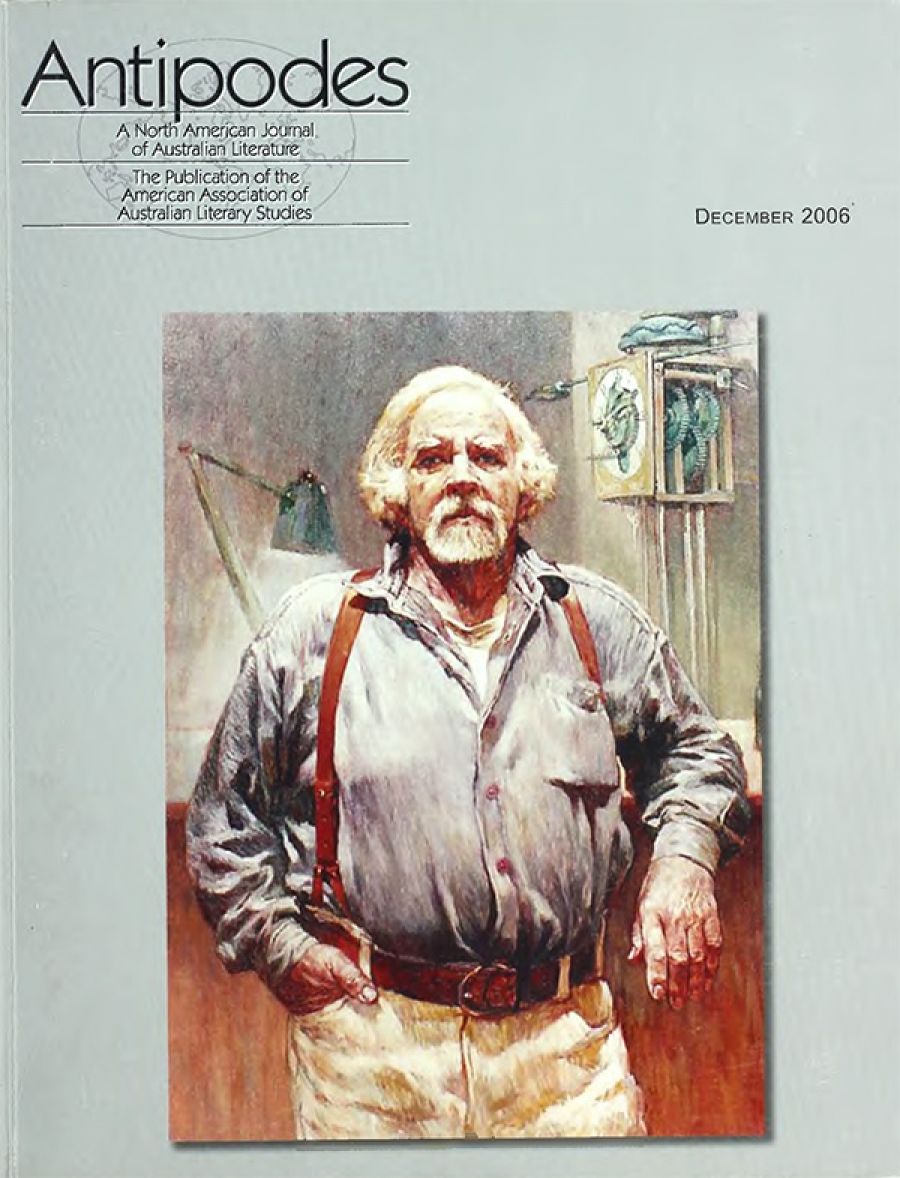
- Free Article: No
- Contents Category: Journals
- Review Article: Yes
- Article Title: Embracing complexity
- Online Only: No
- Custom Highlight Text:
In an essay for Australian Literary Studies (ALS) exploring the modernist networks of Judith Wright and Frank Scott, Anouk Lang argues that ‘participation in modernist little magazines … was crucial to their development as writers. Publication in these journals validated their tentative efforts and imbued them with confidence to move on to further ventures.’ It is a terrific recommendation for the important role that literary journals continue to serve for writers – both emerging and established, creative and academic. ALS and Antipodes provide vigorous examples of two such journals which support the fostering and fortification of literary culture in Australia.
- Book 1 Title: Antipodes vol. 20, no. 2
- Book 1 Biblio: US$30 (annual subscription) pb, 123 pp
- Book 2 Title: Australian Literary Studies vol. 22, no. 4
- Book 2 Biblio: $45 (annual subscription) pb, 127 pp
- Book 2 Cover Small (400 x 600):

The ideal of an Australian literary culture, judging by the work in both ALS and Antipodes, is no longer defensively and parochially defined. The latest issue of ALS is thematised ‘North/America’, and much of the criticism is comparative in nature. Carol Hetherington, for example, evaluates the British and American editions of Katherine Susannah Prichard’s novels, concluding in favour of the American editions published by W.W. Norton. In addition, the literary criticism in ALS focuses on both canonical and emerging writers, as well as on the literature of both the city and the bush. It is also unafraid to issue challenges. Greg McLaren asks critics to rethink their recent praise for the poetry of Harold Stewart and, in particular, his translations of haiku. McLaren argues that the translations, which use the form of the heroic couplet, demonstrate ignorance of the philosophical and aesthetic contexts and meanings of the Japanese form.
Many of the essays in ALS traverse the theme of gender. Lang’s compares the different experiences of Scott and Wright with small magazines. She reveals how T.S. Eliot, articulating a gender conflict generally ignored in modernist histories, wrote about his struggle to keep Egoist a male journal, ‘as I distrust the Feminine in literature’. Wright, in her work for literary journals, initially found herself shunted to the social columns. Katherine Bode’s essay is another one that is focused not only on the cross-cultural but also on gender. She identifies a trend in recent Australian and American women’s novels that focus on and envision the male body as damaged. Such texts repeat the hysterical patriarchal model of the ‘dead white male’, which is based less on any real overturning of the gender hierarchy than on patriarchy’s inability to conceptualise equality as anything other than the demise of the dominant order. Bode argues that ‘representations of damaged white men provide evidence of the existence of a crisis in masculinity, at the same time that this focus on individual bodies in pain conceals the political, social and institutional privileges still accorded such objects’. However, she also concedes that such texts, à la Charlotte Brontë’s Jane Eyre, in disrupting a hierarchy of power, allow a context for the renegotiation of gender relations.
Antipodes, subtitled ‘A North American Journal of Australian Literature’, begins with three essays on the fiction of Peter Carey, including Jonathan Highfield’s positive re-envisioning of the late Australian adventurer Steve Irwin in connection with Herbert Badgery, the swashbuckling protagonist of Illywhacker (1985). Highfield argues that Irwin, like Badgery, should be read not as ‘self-aggrandizing and parodic’ but as ‘trying to articulate a different version of the “true Australian”’. According to Highfield, Irwin reworked the destructive European model of ‘Crocodile Dundee’ by infusing it ‘with pre-European Australian ethics; the hunter is no longer a killer, working against savage nature, but instead a rescuer, attempting to restore the severed connections between humans and the rest of the ecosystem’.
Despite this early focus on a canonical writer (Carey) and another well-exported Australian (Irwin), the literary criticism in Antipodes is by no means narrow or patriotic. It includes Mary Ann Rygiel’s comparative study of Belgian settings and colonialism in the work of Joseph Conrad and David Malouf, John Beston’s reading of the novels of Patrick White for the influence of Willa Cather, and Emily Potter’s intelligent essay on Andrew McGahan’s The White Earth (2004) and non-Indigenous belonging. In contrast to Highfield, Potter advocates a ‘renovation’ of national identity based on an acknowledgment of colonial history. When it comes to Indigenous cultures and ecological values, she advocates, like Highfield, ‘proximity rather than distance’ but also, unlike Highfield, ‘uncertainty instead of assurance’.
Demonstrating Antipodes’ commitment to a broad definition of Australian literary culture is the interview by the Chinese Australian poet, novelist and critic Ouyang Yu with the Chinese Australian painter Fu Hong. Fu Hong is decidedly upbeat about being an Australian, embracing the ‘revolutionary change’ that ‘freedom and sunshine’ lent to his art, despite some leading questions from an interviewer who has publicly expressed less enthusiasm for Australia. Fu Hong makes the enigmatic revelation that the style of his work has begun ‘changing from three dimensions to two and a half’. He also asserts, offering advice for artists (and writers) trying to manage having a style without degenerating into self-parody, that ‘[a] high-minded artist lives in pain, the pain of negating himself while repeating himself’.
Antipodes, in addition to publishing literary criticism, also publishes creative work by Australian authors. Joel Magarey’s poem, reflecting on the craft of poetry, picks up nicely on the idea of balancing style with newness, and introduces the metaphysical hunger that drives creativity: ‘The fad of your latest feeling, / once you’re over it, / becomes as ridiculous to look back on / as Bay City Roller fever. / Yet your heart, like the day / must be filled up somehow, / or the mouth of its emptiness / will swallow you whole.’ Brendan Ryan’s ‘A Tight Circle’, dealing with characteristically pastoral subject matter, is a thoroughly convincing evocation of a funeral held for the poet’s uncle. The mourners, ‘made straggly by grief’ and needing ‘distance from the hole’, include a ‘stranger wearing an Essendon beanie’. There is a local priest with ‘a glint in his eye’, and the poet’s cousins are instructed by the undertakers, who are former farmers, how to lower the coffin into the grave. The men ‘mutter / through the Lord’s Prayer / as highway traffic streams past’.
As for the fiction featured in the journal, Amanda Maxwell offers an Australian or, perhaps, Australiana version of Love in the Time of Cholera. A shy geriatric man works up the courage to ask a fish-and-chip-loving regular at the Drake Hotel to Spa Town. He ‘wonders how good her eyes are these days and whether she notices his flushed cheeks’. Rosemary Allan’s short story ‘Into the Light’ similarly features an elderly couple and is also narrated from the perspective of the male protagonist (lending support to the trend identified by Bode in ALS). The story is written in the first person and consists of the man’s reflections, as he fishes, on his wife’s condition – she is dying of cancer – and of his responsibilities towards her in the future. While the relationship appears to be one based on mutual love, the narrator, a man who likes to hold fish to his stomach while they die ‘to soothe and reassure their going out’, contemplates euthanising his wife. His arrogance is divine and provocative. Some of the lines in the story are disturbingly good: pelicans’ ‘beaks seem to lead them, the way our desires lead us, pulling the body along like an afterthought’.
As suggested in Lang’s ALS essay, the role of literary journals in fostering writers is significant. Another function that literary journals arguably serve is touched on by Michael Mack in an essay for Antipodes, in which he argues that Elliot Perlman’s novel Seven Types of Ambiguity (2003), reclaims the singularity of subjectivities and multiplicity of perspectives disavowed by a homogenising market economy. As such, Mack argues, Perlman’s novel provides an antidote to the fundamentalists and their ‘hostility to the complex’. The same could also be suggested of literary journals such as ALS and Antipodes.


Comments powered by CComment